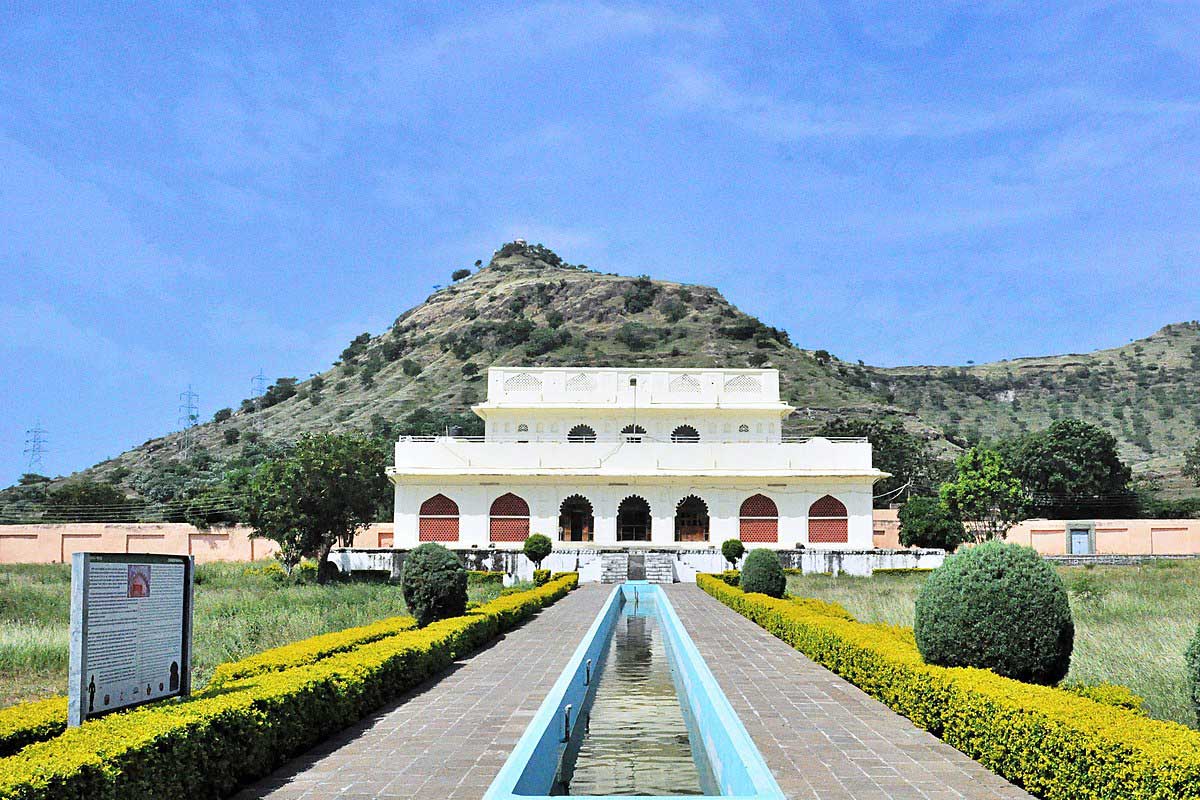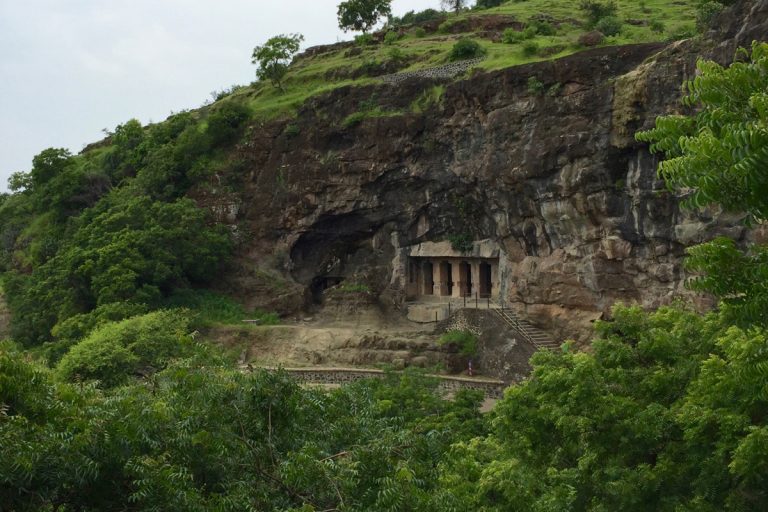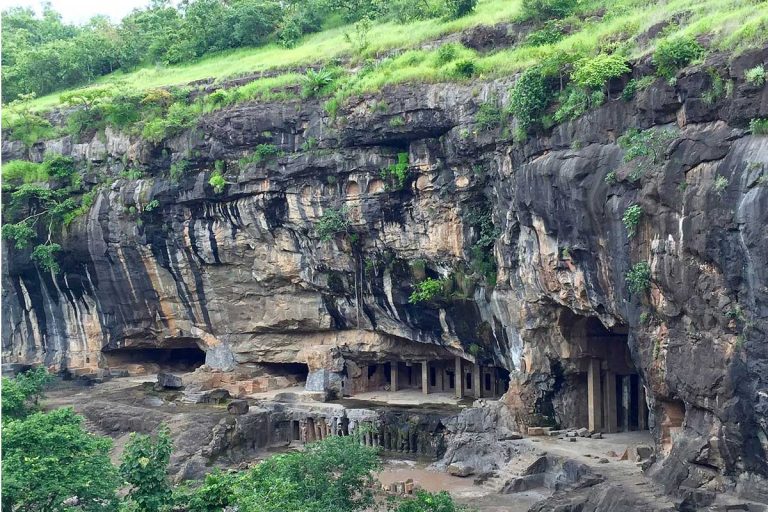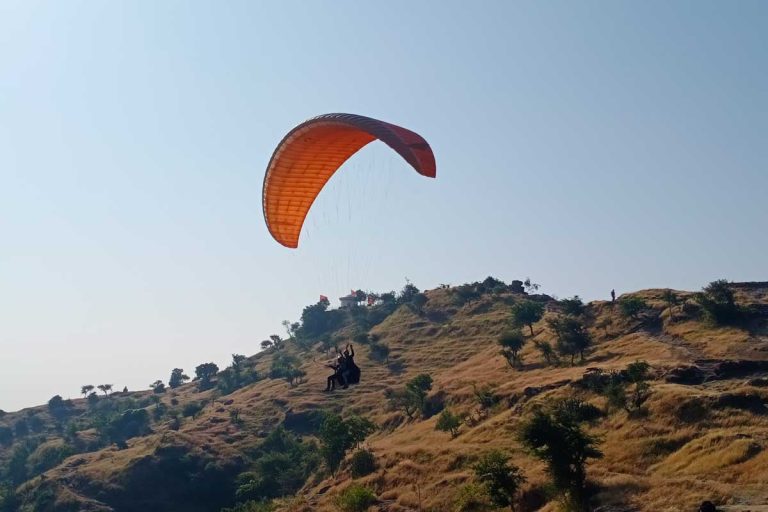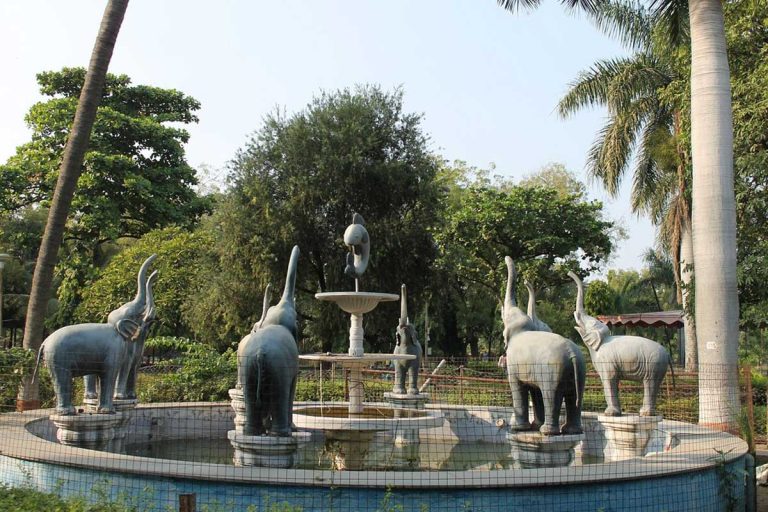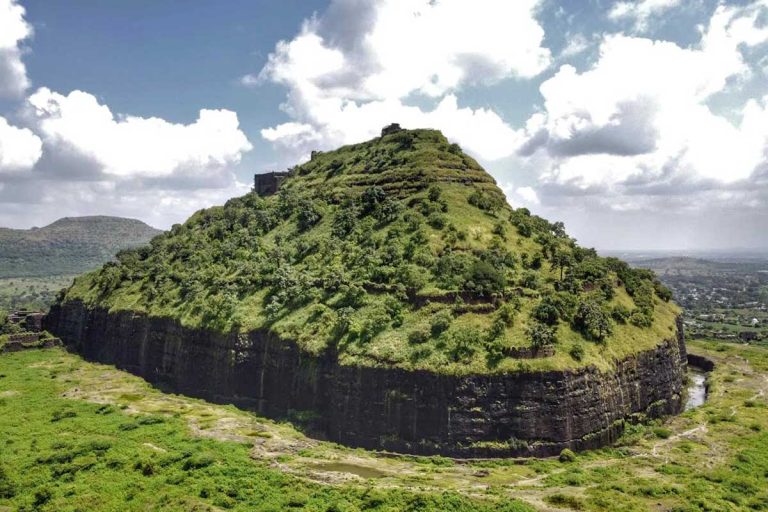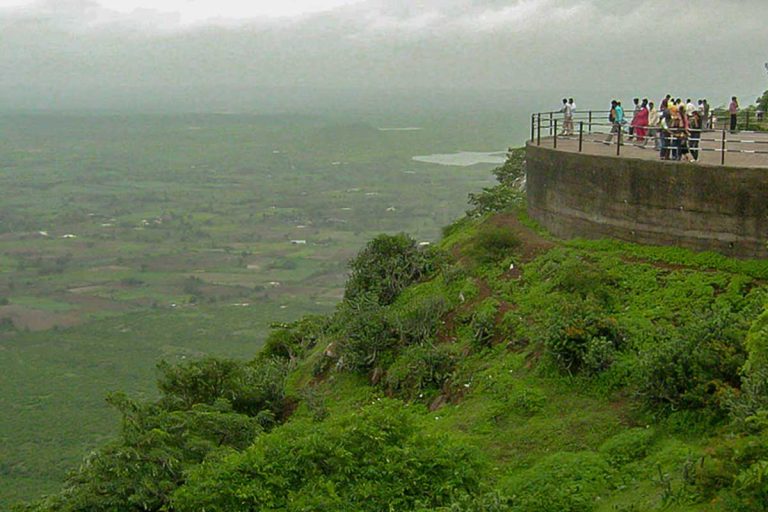Soneri Mahal
Soneri Mahal (Golden Palace) is a historical building in the city of Aurangabad at the foot of the Satmala mountain ranges. Babasaheb Ambedkar Marathwada University is located in the area. The golden palatial building with small mountain ranges behind it looks like a picture. The surrounding trees, meadows and fields add to the beauty of this building. The structure got its name as Soneri Mahal because the Darbar Mahal paintings on the ground floor of Soneri Mahal were painted with real gold water.
History
The palace was built by a Sardar from Bundelkhand who came to Deccan with Aurangzeb. Some available evidence suggests that Shah Jahan sent two brothers, Pahad Singh and Zhunjar Singh, to the Deccan. During the reign of Aurangzeb, Pahad Singh showed his loyalty to the Mughal Empire by performing feats from time to time. Later he lived in the golden palace of Aurangabad. Another support for this evidence is that there is a memorial to Pahad Singh’s step brother Lala Hardaul outside the Soneri Mahal.
Soneri Mahal is a monument built in AD. Probably built between 1651 and 1653. 50,000 rupees were spent to construct this building at that time. In 1934, estimating the original price, the then Nizam of Hyderabad State bought this palace from Sawai Mahendra Virsinhdev Bahadur of Orchha for Rs 26,400.
Design of Golden Palace
The gateway (Hathikhana) of the Golden Mahal is a lofty structure with an arched security wall. The structure of the elephant house is grand and rectangular in shape and its slender arches add to its beauty. A path leads to the main palace from this elephant enclosure. There is a garden on both sides of this path. The rectangular reservoir in the middle of this road was built by the preservationists in 2001-2002 to preserve the heritage of Mughal architecture.
The structure of Soneri Mahal is also rectangular and two-storied and is on a high square. On the ground floor there is a colonnaded hall and four other rooms. On the second floor there is a central hall with four rooms at its four corners. There are stairs in the south-east area to go up from the lower floor. At the top there is a terrace and there is a watch tower on it. The building is designed with grand balanced carved arches, good lighting scheme through the arches and main structure in the middle.
The construction of the entire building is made of stone, lacquered bricks and lime. Soneri Mahal is an excellent example of the composite architectural style of Rajput and Mughal. This Vastu is a State Protected Monument of the Government of Maharashtra under the Maharashtra Ancient Monuments Archaeological Sites and Ruins Act, 1962.
Pictures on the wall (Mural)
In the pictures at Soneri Mahal, an attempt has been made to create a real reflection of nature. Mughal paintings (miniature Mughal paintings) are full of leaves, flowers, trees. The study of plant architecture is seen to be excellent in Mughal paintings. The niches on the eastern side of the building are decorated with traditional flowers and vases. The pictures of flowers like roses and lilies are exquisitely drawn. The pictures use bright and shiny colors like brown red, blue, green, purple, white and gold. The use of real gold water in places of gold color gives the walls a metallic sheen. The linear approach to the pictures at once makes the pictures seem alive. In the course of time the paintings here have been partially destroyed.
Regional Museum
The Regional Museum was established in the year 1979 on the first floor of the building. The museum has a collection of antique artefacts displayed in various halls. These include objects like ancient idols, paintings, ornaments, pottery, weapons, baked clay artefacts found in Paithan and Ter excavations, pictures drawn on wooden boards and glass, stone sculptures from different parts of Marathwada, etc. are particularly noteworthy. The museum is open to the public from 10.30 am to 5.00 pm on other days of the week except Monday. On the second floor of the building is the office of the Assistant Director, Department of Archaeology, Government of Maharashtra, Aurangabad.
Lala Hardaul Samadhi
Lala Hardaul’s mausoleum is about 50 meters away in the visible exterior of the Soneri Mahal monument. He was the son of Bundelkhand Orchha Naresh Virasimhadeva and brother of Pahad Singh. Lala Hardaul is known as a great freedom fighter and skilled warrior of Bundel continent. His tomb is square in shape. There is a step well in this Samadhi area. He has a special place in the history of Bundelkhand because of his prowess. Lala Hardaul, who was a staunch opponent of injustice, had taken up a vigorous campaign against the Mughal power and left the Mughal power in awe. Even today the stories of his bravery are famous in Bundelkhand and elsewhere. Unable to bear the growing power of Lala Hardaul, his brother Jhunjarsingh killed him on Vijayadashami AD. In 1631 it is mentioned that poison was experimented on, in which he died. Built in memory of Lala Hardaul, this mausoleum is known as Hardaul Chabutara. An article in Devanagari and Urdu script is engraved on this platform and it mentions Hardaul. Due to Lala Hardaul’s achievements, he has a prominent place in history, hence this Namasamadhi (Chabutra) has been declared as a State Protected Monument by the Department of Archeology, Government of Maharashtra and is under the control of the Department of Archaeology.
- Location: Paharsingpura, Aurangabad
- Time : 9 am to 5 pm
- Entrance Fee: INR 10 per person

